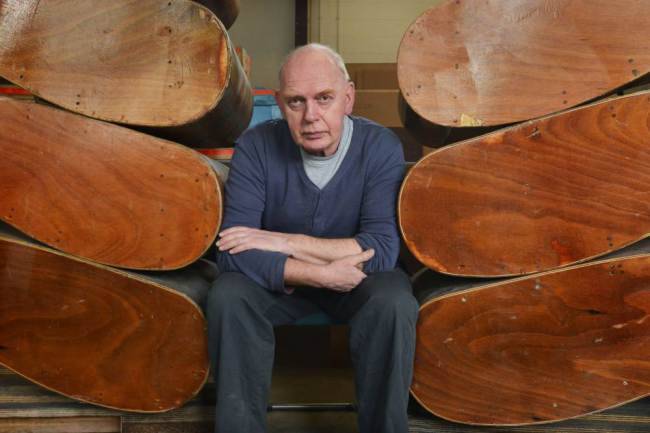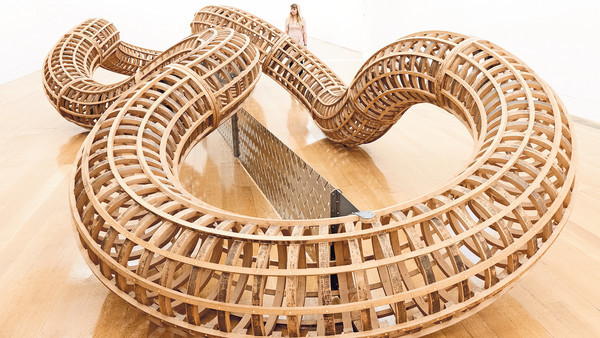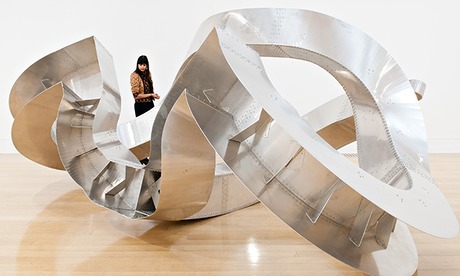


The Richard Deacon retrospective at Tate Britain is officially open! Only in its first week, the exhibition is already the talk of the town. But don’t take our word for it, here’s a list of recent press generated thus far.
Happy reading!
Apollo Magazine by Zoe Pilger (Feb 11):
[Deacon] describes his fascination with the holes in Swiss cheese, “particularly the relationship between the hole and the material surrounding the hole… A number of those wooden works in the ‘90s actually came from standing in the supermarket and looking at cheese.”
The Guardian by Rachel Cooke (Feb 8):
…Richard Deacon likes to describe himself as a “fabricator,” his work often involving both a great many technical feats… But, as he has pointed out, the word has a double meaning. “I quite like the idea that a fabrication can be something made up rather than the truth, ” he says. “When you fabricate something it has a straightforward sense of making, but it also has a sense of invention of make-believe.”
Financial Times by Jackie Wullschlager (Feb 7):
Solid/void, in/out, organic/geometric,soft/hard: Deacon’s sculptural vocabulary is based on contradictions. The most successful pieces turn on a paradox by which the laborious working processes of steaming, stretching, bending wood are laid bare but the result is light, graceful, flexible.
London Evening Standard by Ben Luke (Feb 5):
Deacon’s work is more abstract and enigmatic, less instant in its appeal than Gormley and Kapoor’s. But this handsome, carefully chosen retrospective confirms that over the past 30 years he has created some of the most compelling sculpture around – and much of it seems to get better with age.
The Telegraph by Alastair Sooke (Feb 3):
One of the pleasures of visiting a gallery is encountering works of art by artists at the top of their game. After (1998), by the British sculptor Richard Deacon, who won the Turner Prize in 1987, is a good example of what I mean.
The Guardian by Adriane Searle (Feb 3):
There are forms here that almost escape comprehension, and which feel like spacial conundrums. In his work movement and stasis, volume and gravity, openness, closure and conjunction come together in all kinds of inventive, unexpected and surprising ways.
The Guardian by Nicholas Wroe (Jan 31):
Sculptor Richard Deacon: why one pair of hands is never enough – Ahead of his retrospective at Tate Britain, the renowned sculptor tells Nicholas Wroe how he has realized that it doesn’t matter 'who actually puts the screw in’
Metro by Oliver Jones (Jan 30):
It was Deacon’s encounter with not rock start but with a series of enormous rock-carved Buddhas in Sri Lanka that set him on his artistic course. 'I was seven and I remember realising that there used to be a cliff there but there was a Buddha, that the material was the same but that something was lost… You could sense the absence of the cliff.“
The Telegraph by Martin Gayford (Jan 18):
[Deacon] confesses to an anxiety about "the tendency for things to fall apart, for flux to overwhelm us,” then adds: “I don’t really think that shape belongs to things in themselves. We impose shape on them – we feel happy when things fall into shape.”
The Richard Deacon retrospective will be on view at Tate Britain through April 27.
